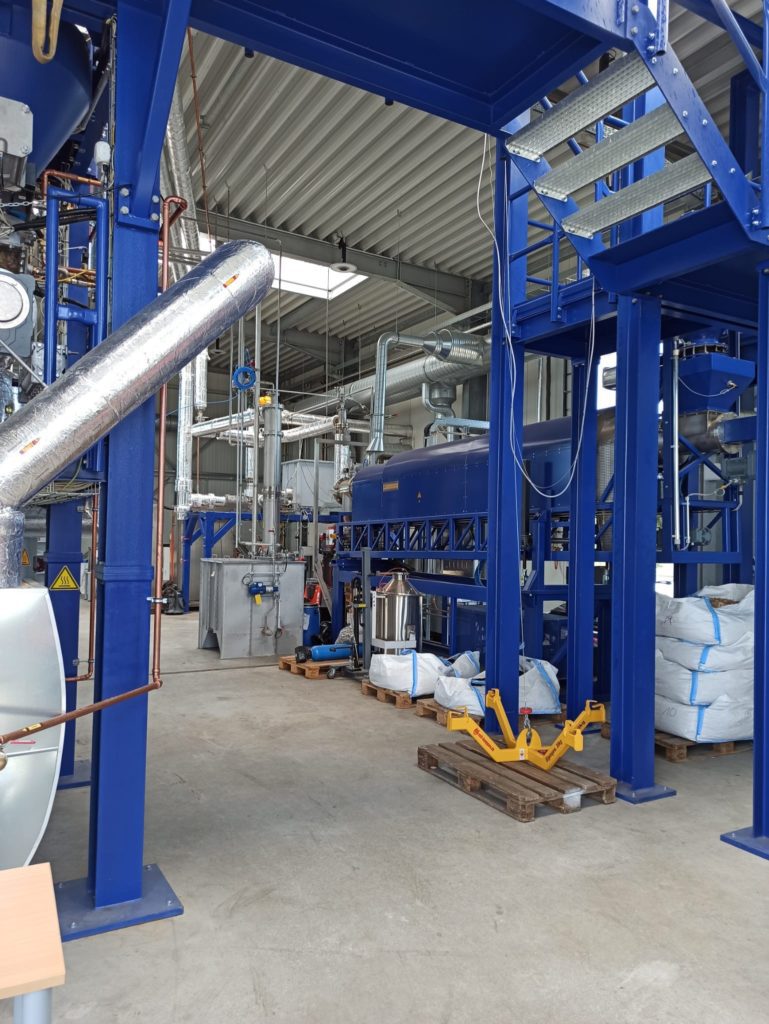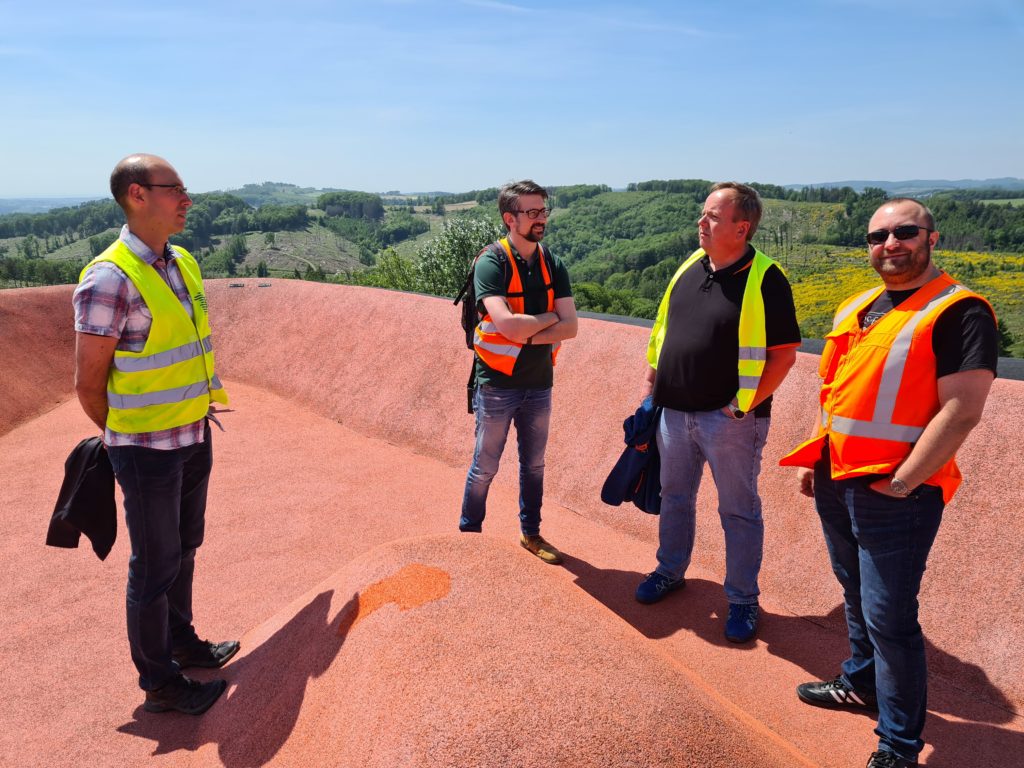The HOOP project is all about sharing best practices and learning from each other. While usually it is our 8 Lighthouse cities and regions that are sharing work insights, the HOOP Network also includes a number of organisations that showcase innovative thinking and implementation of circular practices.
In June 2023, the two German consortium partners, awm (Münster Lighthouse) and Collaborating Centre on Sustainable Consumption and Production (CSCP – leader of the work package on stakeholder engagement), visited the HOOP Network member Bergischer Abfallwirtschaftsverbandverband (BAV) for a one-day study visit of their :metabolon project. During the visit, the awm and CSCP learned about the project through various presentations and exchanged knowledge and experiences with their peers at BAV. The visit centred on :metabolon, a former landfill that was converted to a competence centre for circular economy and resource management with a strong focus on education and research. Situated in the heart of the German state North Rhine-Westphalia, :metabolon engages with a broad audience, promoting education and research that is central to the daily business of waste treatment and landfilling processes.

Visitors at :metabolon are invited to climb the 360 stairs to reach to top of the landfill, which is still being filled, giving a unique opportunity for awareness raising. They can also visit :metabolon’s photovoltaic installations, education and recreational sites with mountain bike trails, playgrounds, educational facilities, and of course take in a stunning view of the surrounding from the top of the landfill.
Education is a big part of the concept behind :metabolon, and the project has multiple classrooms and educators available on site that allow children and adults of all ages to learn about different circular economy topics. Fittingly, awm also visited with their educational experts allowing fruitful exchange.
BAV places emphasis on maintaining a broad research structure: They are part of many networks, including the HOOP Network, and also work in close collaboration with a technical university in the area, allowing them to work on contemporary circular economy topics such as the production of biochar through pyrolysis. Figure 2 shows the pyrolysis plant that is already running in order to conduct tests. As this is one of the core topics for awm in Münster, this exchange helped in sharing valuable experiences and opportunities to learn from one another.

While research, education, and recreation play a big role, the daily business was also discussed. awm joined the visit with technical experts responsible for the composting and anerobic digestion plants in Münster and allowing for a fruitful exchange about the ongoing biowaste treatment and collection.

It was great to see that both waste management companies have chosen very similar approaches in treating their organic fractions. This led to many engaging discussions, not only about smaller individual solutions that both companies have developed over the years for their processes but also about larger technical or legal barriers that they currently or may face in the future, highlighting the value of direct and personal exchanges.
Overall, the visit was a success and many learnings and opportunities to collaborate within the HOOP project were discussed.
